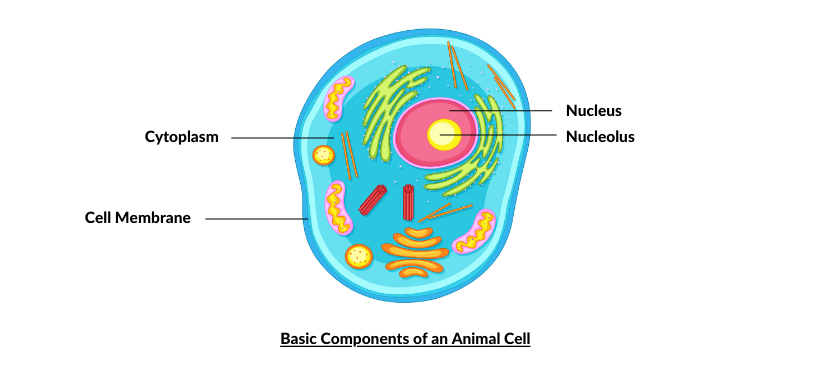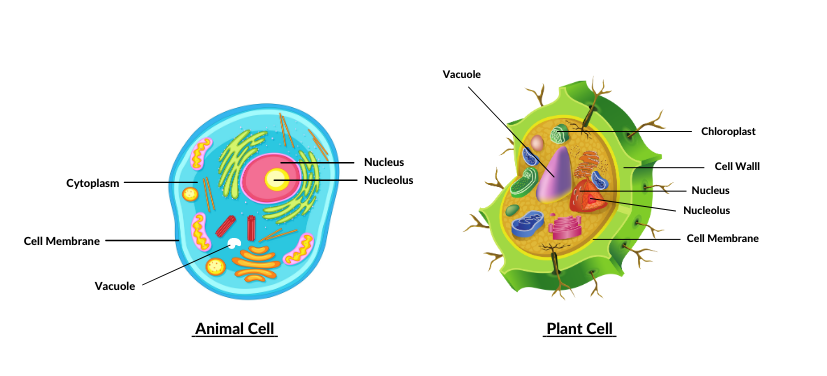What is a cell?
Cells are the basic building blocks of every living being. we are made up of trillion such cells. Let's understand what is a cell and more about the structural and functional units of life in detail.
Discovered in the year 1665 by Robert Hooke, the discovery of a cell has an interesting story associated with it. Wanting to learn more about the microscopic world, scientist Robert Hooke started his work to improve the design of the existing compound microscope in 1665.
His microscope used three lenses and a stage light, which illuminated and enlarged the specimens. These advancements allowed Hooke to see something wondrous when he placed a piece of cork under the microscope. The cork looked as if it was made of tiny pores, which he came to call cells because they reminded him of the cells in a monastery.
Cell Definition: Cell is the basic structural, functional, and biological unit of all known organisms. They are the smallest units of life also known as building blocks of life. Just as a building is made up of bricks, so is our body made up of cells.
How many cells does human body have? The human body has trillions of cells which vary in shapes and sizes. Different groups of cells perform a variety of functions. Organisms made of more than one cell are called multicellular (multi : many; cellular : cell) organisms. Example: human body and plants. The single-celled organisms are called unicellular (uni : one; cellular : cell), example amoeba.
Tissue: Tissues are groups of cells that have a similar structure and act together to perform a specific function. So all organs are made up of tissues and tissues are made up of cells.
What do cells do? Just like different organs of our body perform different functions, like the digestive system helps in digesting food to give us energy. And like different parts of plants also perform different functions, like the roots help in the absorption of water and minerals and leaves perform photosynthesis. Much similarly a cell also has different parts or components that perform different functions.
The Fundamental Unit Of Life
Robert Hooke, in 1665, made a chance observation while examining a thin slice of cork. He found that the cork resembled the structure of a honeycomb consisting of many little compartments. Robert Hooke called these boxes 'cells', meaning "a little room" in Latin. Here, we have an interesting thing to show you. This is a temporary mount of an onion peel.
What do you observe?
These are the cells of the onion peel. Aren't these structures similar to each other? Yes, they are. All the onion cells together form a big structure like an onion bulb. Regardless of the size of the onion, they come from, all the cells of the onion peel look the same.
These cells are the basic building units of the onion bulb. In fact, it is not only the onion but all the organisms that we observe around us are made up of cells. In 1674, Leeuwenhoek discovered the free-living cells in pond water for the first time using an improved microscope.
Further, in 1838-39, the Cell Theory was presented by Schleiden and Schwann which was further expanded by Virchow in 1855.
The Cell Theory states that:
- All the plants and animals are made up of cells.
- Cell is the basic unit of life
- All the cells arise from pre-existing cells by undergoing division to produce new cells of their own kind.
Basic Parts or Components:
Cell Membrane: Different components of a cell are enclosed by structures called the cell membrane or plasma membrane. They give shape to a cell. A cell membrane separates cells from one another and also the cell from the surrounding medium. It is porous and allows the movement of substances or materials both inwards and outwards.
Cytoplasm: It is the jelly-like substance present between the cell membrane and the nucleus. Various other components, or organelles, of cells are present in the cytoplasm. These are mitochondria, Golgi bodies, ribosomes, etc.
Nucleus: Generally spherical and located in the center of the cell, the nucleus is an important part of a cell. It is separated from the cytoplasm by a membrane called the nuclear membrane. This membrane is also porous and allows the movement of materials between the cytoplasm and the inside of the nucleus.

There is a smaller spherical body in the nucleus called the nucleolus. In addition, the nucleus contains thread-like structures called chromosomes. These carry genes and help in the inheritance or transfer of characters from the parents to the offspring.
Similarities Between Animal and Plant Cell:
Both animal and plant cells have cell membranes, nucleus, nuclear membrane and cytoplasm.
Differences Between Animal and Plant Cells:

Let us now see the additional organelles present in plant cells:
1. Vacuoles: Vacuoles are membrane-bound organelles that can be found in both animals and plants and their function is to handle waste products i.e. to take in waste products and also to get rid of waste products.
2. Cell Wall: In the case of plants, in addition to the cell membrane there is an outer thick layer in plants cells which is called a cell wall that protects the plant cell against variations in temperature, high wind speed, atmospheric moisture, etc.
3. Plastids: Plastid is a double membrane-bound organelle involved in the synthesis and storage of food, commonly found within the cells of photosynthetic plants. A plastid containing green pigment (chlorophyll) is called chloroplast whereas a plastid containing pigments apart from green pigment is called a chloroplast. A plastid that lacks pigments is called a leucoplast and it is involved mainly in food storage.
Functions
- Support and Structure: Cells provide structure and support to the organism.
- Aids in Growth through Mitosis: Multiplication/reproduction of cells occurs through the process of mitosis, in which two identical daughter cells are formed through the parent cell. In simple organisms, the reproduction of new organisms happens via mitosis.
- Active and passive transportationis done by cells. Various chemical processes take place inside a cell, a cell needs to get rid of such waste, also the cell helps in the import of nutrients.
- To Produce Energy: To carry out various chemical processes, cells will require energy. In animals, the energy is produced by the cells through the process of respiration, whereas in plants the energy is produced by the cells with the help of photosynthesis.
Understanding Types Of Cell
1. Prokaryotic Cells: The cells having nuclear material without a nuclear membrane are termed prokaryotic cells. The organisms with these kinds of cells are called prokaryotes. Examples are bacteria and blue-green algae.
2. Eukaryotic cells: The cells which have a well-organized nucleus with a nuclear membrane are designated as eukaryotic cells. All organisms other than bacteria and blue-green algae are called eukaryotes.
Difference between Prokaryotic cells and Eukaryotic cells:
Read More:
What Are Cell Organelles: Types and Their Functions - Studynlearn

Leave your comment